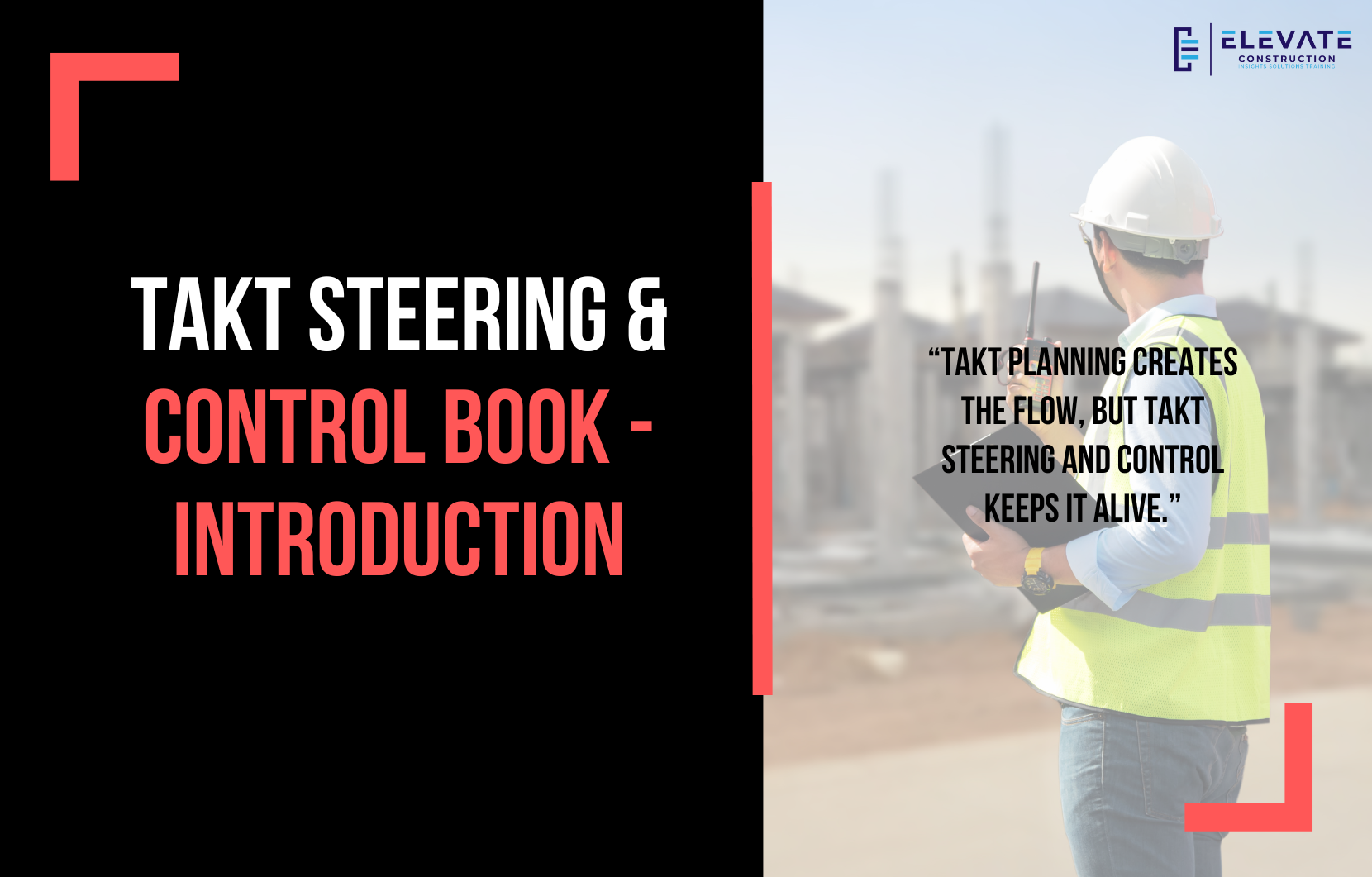Keeping Projects on Track
Takt is having its moment in the sun, and it couldn’t come at a better time. After the success of Takt Planning and The First Planner System, we’re now diving into the next critical piece, Takt Steering and Control. This is the field level method that helps teams maintain flow once the plan is created and ensures production doesn’t collapse under real-world pressure.
Why Another Book on Takt?
Planning alone isn’t enough. A beautiful Takt Plan on paper won’t get you to the finish line unless you have a system to steer trades through the project and control the environment where they work. That’s why Takt Steering and Control focuses on short-interval production in the field.
This book asks and answers four key questions:
- How is flow created after the Takt Plan is completed?
- How do I hold foremen and trades accountable?
- How can we maintain quality at the source?
- What KPIs actually help us improve daily?
Steering vs. Control
We’ve split the traditionally broad idea of “Takt Control” into two parts:
- Takt Steering (First Planners): This is about directing the train of trades. Steering addresses constraints the permanent or semi permanent limits baked into the system (like zone design, sequence, or crew sizing). These need to be optimized early and then respected, without distracting foremen from what they can control. Steering belongs in first planner meetings.
- Takt Control (Last Planners): This is about controlling the environment in the field so crews can flow. Control focuses on roadblocks temporary obstacles that must be removed before they derail the trades. Supers and last planners handle this in the field-level meetings.
To put it simply:

The Problem with CPM and Standalone Last Planner
Many projects today rely on CPM schedules paired with the Last Planner System (LPS). But here’s the hard truth: without Takt Planning as the foundation, LPS can’t deliver its full potential.
Why? Because CPM fails to:
- Align work with capacity,
- Predict realistic project durations,
- Provide correct milestones,
- Or support efficient look-ahead and weekly work planning.
The result is chaos: trades build their own disconnected plans, milestones become meaningless, PPC (Percent Plan Complete) tracks the wrong things, and crews lose trust in the system.
The Power of Integrated Systems
The solution is to pair First Planner (macro level Takt Planning) with Last Planner (short-interval Takt Steering & Control). Together, these systems:
- Deliver accurate end dates and flow based milestones.
- Align pull plans to real capacity.
- Generate effective six-week look-aheads and weekly work plans.
- Synchronize supply chains and handoffs.
- Provide real KPIs like PPC, buffer ratios, and roadblock removal rates.
When these systems are combined, projects move like a train of trades on leveled tracks each zone flowing smoothly, with buffers in place, and a clear path ahead.
From Manufacturing to Construction
This approach borrows heavily from the Toyota Production System, where flow is sacred. Imagine trying to run a car factory with CPM logic it would collapse into chaos. Yet, that’s what construction often does today. With Takt, we can finally bring the same discipline of line manufacturing and pod layouts into the jobsite, adapted to construction’s unique needs.
The Road Ahead
Takt Steering and Control is the bridge between planning and execution. It shows how to keep projects moving once boots hit the ground, separating permanent constraints from temporary roadblocks, and assigning responsibilities clearly between first planners and last planners.
This is the introduction. Next, we’ll dive into constraints how to identify them, optimize them, and live with them while protecting the flow of the trades.
Key Takeaway
Takt Planning creates the flow, but Takt Steering and Control keeps it alive. By separating permanent constraints (steering) from temporary roadblocks (control), and assigning clear roles to first and last planners, projects finally gain the system they need to stay on track in the field.
If you want to learn more we have:
-Takt Virtual Training: (Click here)
-Check out our Youtube channel for more info: (Click here)
-Listen to the Elevate Construction podcast: (Click here)
-Check out our training programs and certifications: (Click here)
-The Takt Book: (Click here)
Discover Jason’s Expertise:
Meet Jason Schroeder, the driving force behind Elevate Construction IST. As the company’s owner and principal consultant, he’s dedicated to taking construction to new heights. With a wealth of industry experience, he’s crafted the Field Engineer Boot Camp and Superintendent Boot Camp – intensive training programs engineered to cultivate top-tier leaders capable of steering their teams towards success. Jason’s vision? To expand his training initiatives across the nation, empowering construction firms to soar to unprecedented levels of excellence.
On we go

